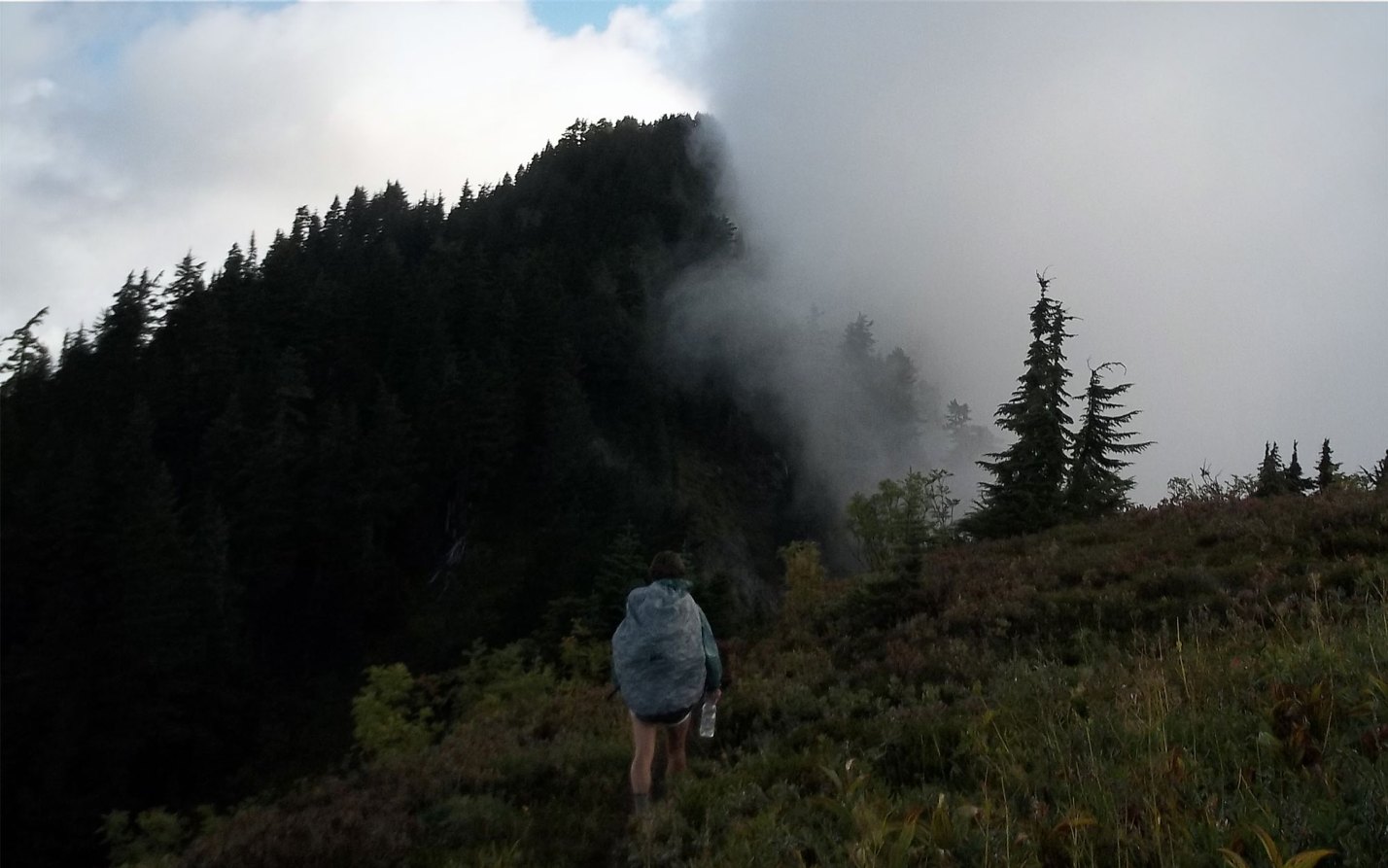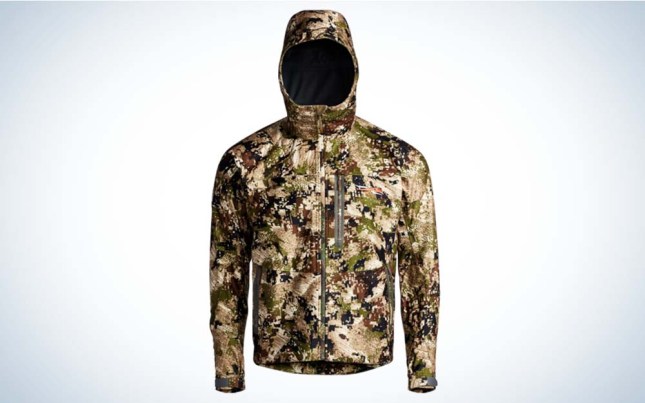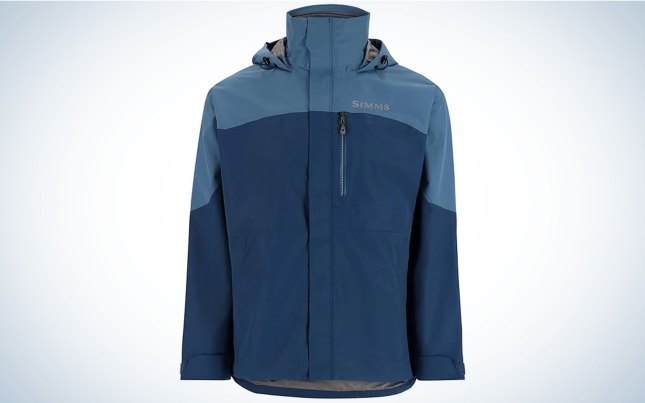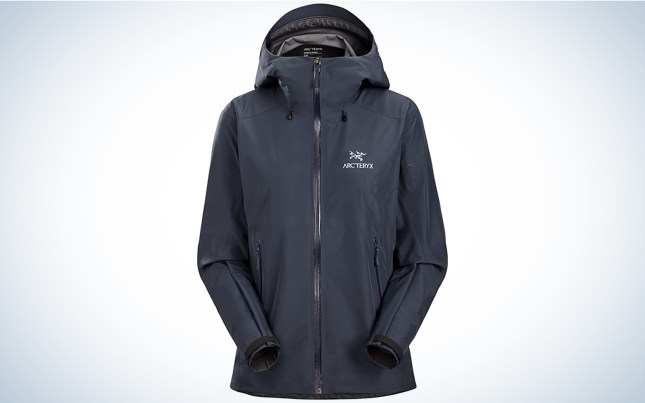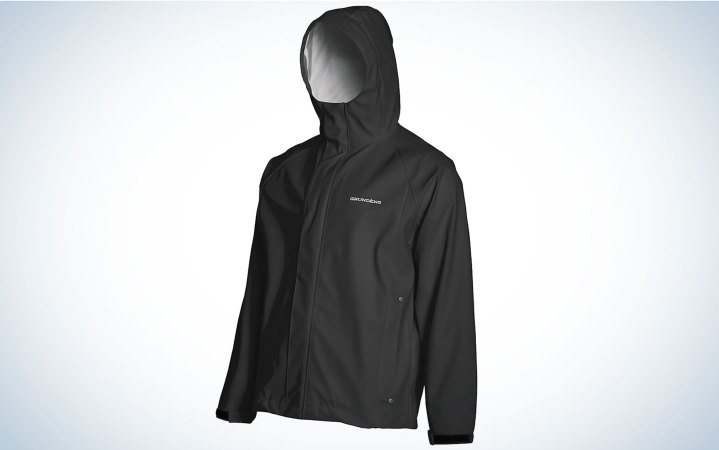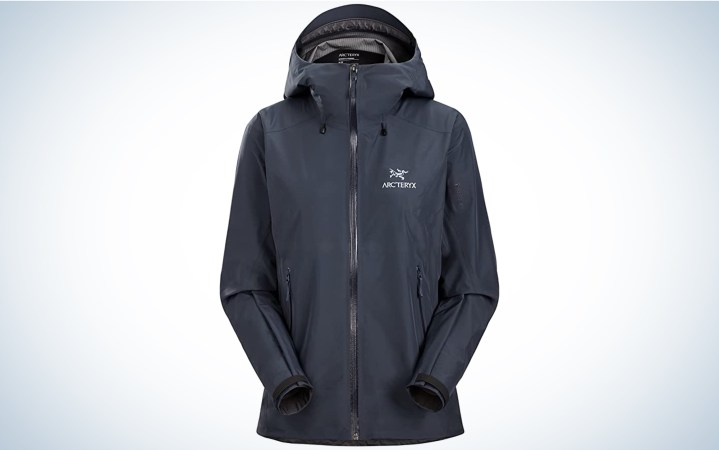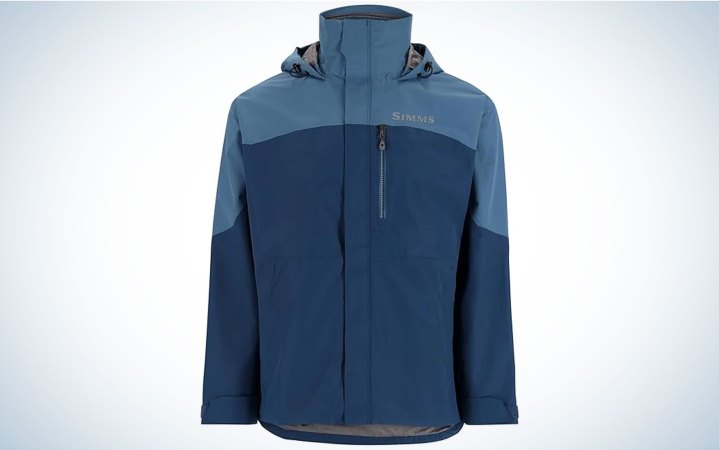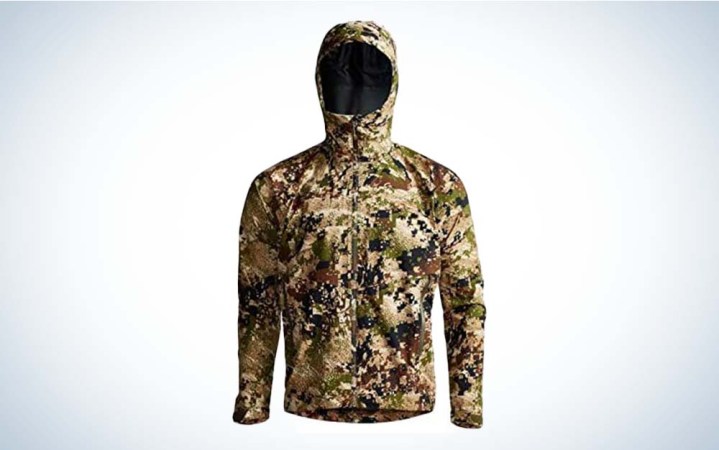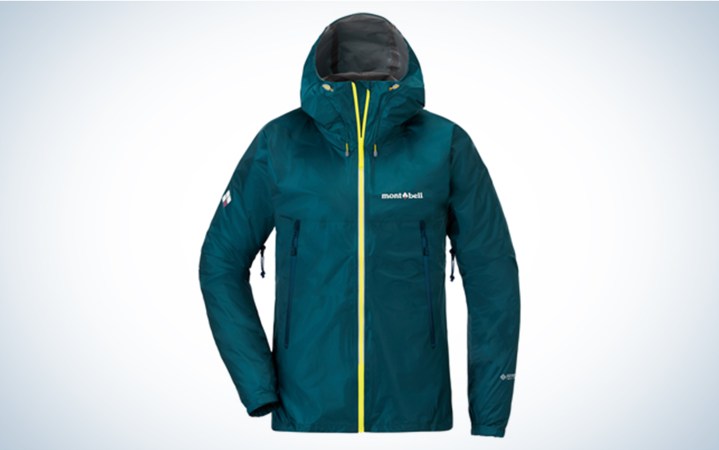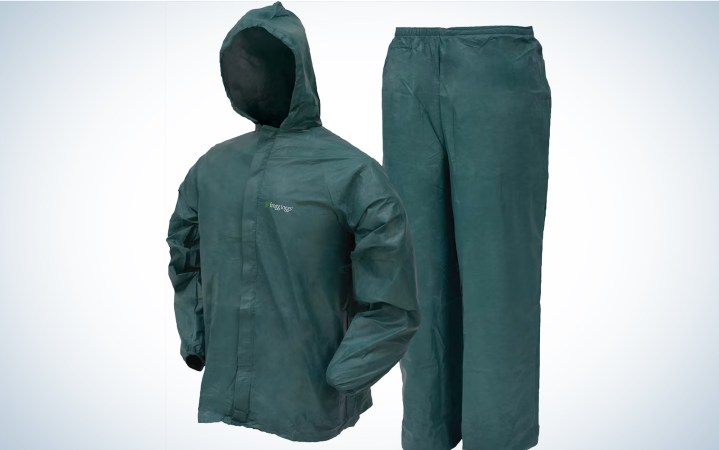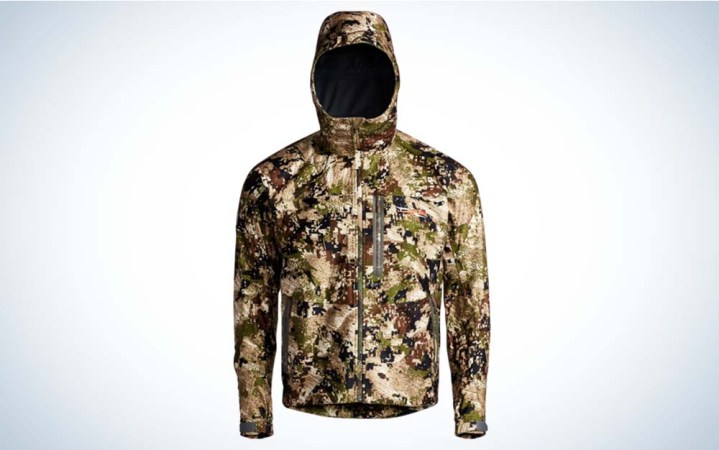We may earn revenue from the products available on this page and participate in affiliate programs. Learn More ›
More often than not, my rain jacket sits unused at the bottom of my pack, but when I need to pull it out, it’s a real lifesaver. Soaking through a puffer or base layer can send even the most hardened individuals scrambling back to their car, or staring down hypothermia. If your current shell layer doesn’t have the chops to get you through the season, it’s time to upgrade. Whether you are hunting, fishing, hiking, or backpacking, here are our top picks for the best rain jackets.
- Best for Extreme Conditions: Grundens Neptune Jacket
- Best for Backpacking: Arctery’x Beta LT
- Best for Fly Fishing: Simms Challenger
- Best Lightweight: Sitka Dew Point
- Best Ultralight: Montbell Versalite
- Best Budget: Frogg Toggs Ultralight2 Suit
- Best for Backcountry Hunting: Sitka Thunderhead
How We Tested the Best Rain Jackets
At Outdoor Life, we’ve got writers and contributors covering the full spectrum of outdoor activities, from sheep hunting in Alaska to fishing on the Potomac, backpacking in the Pacific Northwest to turkey hunting in Indiana. And they’ve all been rained on. The rain can vary, from short but intense squalls to all-day mist to days-long storms. Through these experiences, it’s become clear that there is a wide range of performance in rain gear, with some of it functioning well for specific purposes and completely failing in others. For example, while hunters need rain gear that is tough as nails and extremely quiet, backpackers prize low weight and a small packed volume above all else. For more recommendations for each category, you can dive deep into our take on the best backpacking rain jackets, the best hunting rain gear, and the best rain gear for fishing.
The Best Rain Jackets: Reviews & Recommendations
Best for Extreme Conditions: Grundens Neptune Jacket
Key Features
- Sizes: Men’s XS-5X; women’s XS-XXL
- Price: $100
- Material: PU-coated polyester
Pros
- Actually 100% waterproof
- Affordable
- Durable construction
- Weight comparable to heavy breathable rain gear
Cons
- Not breathable
- Loose, non-athletic fit
I’ve used the same Grundens Neptune jacket for five years, through many hunting, fishing, and boating seasons in Alaska. It offers one of the best compromises between durability, price, and packability. This isn’t a breathable coat, so hiking or excess movement while wearing it requires more diligent temperature management, but unlike breathable rain gear, it’s actually 100 percent waterproof, and moisture won’t soak through.
The coat is a PVC-based fabric that is stretchy but tough. It’s one of the most durable jackets I’ve used for the weight. If you don’t expect much rain, a lighter breathable option might be better, but for perpetually wet areas or extended trips in the mountains or on the boat, this jacket is tough to beat.—Tyler Freel
Best for Backpacking: Arctery’x Beta LT
Key Features
- Sizes: Men’s XS-3X; women’s XXS-XXL
- Price: $450
- Material: 3L GORE-TEX
Pros
- Most waterproof jacket in my test
- Most wind-resistant jacket in my test
- Durable
Cons
- Expensive
- Heavier than other rain jackets I tested
- No pit zips
The Arc’teryx Beta LT was the most waterproof, wind-resistant jacket in my test of the best backpacking rain jackets. In addition to weighing in at a mere 8.5 ounces, it incorporates a number of features that virtually guarantees that not one inch of your insulation layer or baselayer will get wet. The generous hood (even the puffiest of puffers will fit under this one) has cinch cords both at the back and by the chin so that you can get a secure fit, while the cuffs have velcro tabs that you can tighten when the wind picks up or loosen again when you need to cool off a bit. This was also one of the few jackets that I looked at that incorporated a noticeable drop-tail hem.
There are a few downsides to the Arc’teryx Beta LT. Individuals who work up a sweat easily will likely notice the lack of pit zips (the zippers that run underneath your armpits) while UL purists will scoff at the weight—at least until they land in their first serious downpour. But the biggest one is the price, which is over a hundred dollars more than the next closest jacket I looked at and fifteen times more expensive than my budget pick.
Read Next: Best Backpacking Rain Jackets
Best for Fly Fishing: Simms Challenger
Key Features
- Sizes: Men’s S-4X; women’s XS-3X
- Price: $230
- Material: 2L Toray
Pros
- Lightweight
- Ample pockets
- Comfortable, breathable
- Fit nicely over waders
- Jacket shell fully recycled material
Cons
- Not fully sealed
- Not heavy duty
It can be a challenge to find rain gear that fits properly over waders, provides day long insulation, and is also comfortable. The Challenger rain gear from Simms checks all those boxes, at a relatively reasonable price point. Simms has had this line of rain gear for several years but it recently underwent an overhaul that includes using fully recycled material in the outer shell. While this could lead to some speculation about performance, I didn’t notice a difference throughout an entire season of heavy use. The fact that this rain gear is both sustainable and performs is impressive.
The Challenger jacket is also surprisingly warm for being so light, and it kept me warm throughout long days on the water. The fleece-lined pockets are one of my favorite features and gave my numb digits relief while fishing in sub-freezing temperatures. Unfortunately, the pocket interiors are not fully waterproof, so be careful not to have them zipped down during heavy rainfall.
The Challenger jacket shines when wading or fly fishing off a raft or drift boat. Its extra length and numerous adjustment points provide for a solid upper shell over waders while being lightweight and agile enough to cast and move about comfortably.
The Challenger Rain Suit is an excellent option for anglers looking for comfort and warmth without extra bulk. While I wouldn’t recommend it for bushwhacking into a remote creek, it’s the perfect rain gear for an everyday angler who wants to stay dry and comfortable without being weighed down or dropping a fortune. If you need a durable and extremely waterproof rain suit, check out the Simms CX. —Kevin Hughes
Read Next: Best Rain Gear for Fishing
Best Lightweight: Sitka Dew Point
Key Features
- Sizes: Men’s M-3X
- Price: $350
- Material: 3L Gore-tex
Pros
- Lightweight
- Easily packable
- Incredibly breathable
- Two way side zips open all the way to the waist
Cons
- Not durable enough for extended daily wear
At just under 1.5 pounds the packability of the Dew Point rain system is astonishing and doesn’t take up much room in your backpack. The pocket/zipper placement in regards to wearing a backpack means that the waist belt and shoulder straps on your backpack won’t affect the use of the pockets or pit zips. And the leg side zips come all the way to the waist from the ankle cuffs for easy on/off. The Dew Point system is great for multiple day backcountry hunts if you only need something for those surprise rain storms. But it’s probably not the best option if you plan to hunt consistently wet conditions. I put this gear on just before a downpour in turkey season.
During turkey season, I used the Dew Point rain gear on a hunt in Georgia, and it couldn’t have worked better. It kept me plenty dry during a surprise rain storm, when the bottom fell out for a solid minute. But when the sun came back out, the Dew Point provided plenty of breathability, and I didn’t sweat my way out of it like other rain gear I’ve tried in the past. Even though this rain gear is light, it doesn’t sacrifice durability. On this same hunt, I had to maneuver through a briar thicket, and I just knew by the time I made it to the other side that the Dew Point would be ripped to shreds. Luckily, it made it through without any major wounds, and it still keeps me dry.—Chad Bryson
Best Ultralight: Montbell Versalite
Key Features
- Sizes: Men’s S-XL; women’s S-XL
- Price: $250
- Material: Gore-tex Windstopper
Pros
- Very lightweight
- Reasonably water resistant and wind resistant
- Has pit zips
Cons
- Not suitable for extreme conditions
Let’s get the tough part out of the way first: If you are headed into conditions that could be described as “torrential,” you should probably leave this one in your closet. But if you’re looking at more typical rain conditions—the light mist of the Pacific Northwest or short-but-intense squalls of the East Coast—then the Montbell Versalite is an excellent choice. It passed the shower test with flying colors and after the twenty-four waterproofing test (and are you really going to be out in the rain for twenty-four hours?) it was only slightly damp underneath, indicating a high degree of water resistance.
This wasn’t quite the lightest ultralight rain jacket in my test of the best backpacking rain jackets, but the extra features it incorporated (accounting for that extra ounce of weight) upped its performance for big adventures. The biggest of these is the zipped pit vents, essential for letting you cool off and air out when the sweat starts to pick up. It also has (albeit more minimal than the Arc’teryx Beta LT) velcro cuffs and cinches at the hem as well as the back of the hood and at the neck, which will help to keep out cold gusts when the wind kicks up.
When I was headed out for a four-day solo trip into Washington State’s Goat Rocks wilderness with a forecast for clear skies, it was an easy choice to make. The thin material means that, even though it’s a smidge heavier than my best budget pick, it has a lower overall volume, which made it an obvious choice for the 35-liter pack I was carrying. A good thing, too, since the forecast ended up being a bust and I spent the last 36 hours of the trip hiking through something between a mist and a fog. Sun finally reappeared as I hit the parking lot (figures)—when I peeled off the Veralite I was happy to see that I was perfectly dry underneath.
Best Budget: Frogg Toggs Ultra-Lite2 Rain Suit
Key Features
- Sizes: Men’s S-3X; women’s S-XXL
- Price: $30 to $40
- Material: DriPore Gen 2
Pros
- Very, very lightweight
- Inexpensive
- Comes with rain pants
Cons
- Not waterproof in stormy conditions
- Less durable than other rain jackets
The Frogg Toggs Ultra-Lite comes up again and again as an excellent value pick for backpackers and fishermen, and was recommended in both OL’s roundup of the best backpacking rain jackets and the best rain gear for fishing.
Part of this is that the Frogg Toggs Ultralite Suit is extremely cheap, but it’s also partly because it’s a pretty good shell layer. Out of the box, the material is extremely water resistant, able to hold off standing water for over 24 hours. But it has a few fail points to keep in mind. The first is the front zipper, which has no waterproofing, just a little flap to protect it. In a typical rain shower, that’s good enough. In a true downpour, expect water to soak in through this opening. It’s also less durable than other options, easily picking up tears and snags from brushing against snags or rocks. That’s enough on its own to make it a no-go for hunters; if it wasn’t, the noise generated by this rain jacket would do the trick.
But if you don’t mind a little noise, or replacing your rain jacket every season, the low weight and low price point of the Frogg Toggs Ultralite Suit is tough to beat.
Best for Backcountry Hunting: Sitka Thunderhead
Key Features
- Sizes: Men’s M-3X
- Price: $360
- Waterproofing: 3L GORE-TEX
Pros
- Dead quiet
- Articulated elbows and knees
- Gusseted wrist cuffs
- Wear as a single outer layer
Cons
- Packs a little big
The Sitka Thunderhead’s design excels at spot and stalk hunting with a few added bonuses. First and foremost, this system is quiet. Dead quiet. And it’s tough as nails. Typically you don’t get durability and silence in one set of gear. Not to mention, every single feature of the jacket and pants are easily accessed while you wear a backpack.
This jacket is streamlined enough to wear during archery season and provides just enough warmth that you can wear it with some of the best base layers, yet it’s big enough to get a puffy vest underneath. And the pants are cut so that I easily wore them over my regular hunting pants in an emergency.
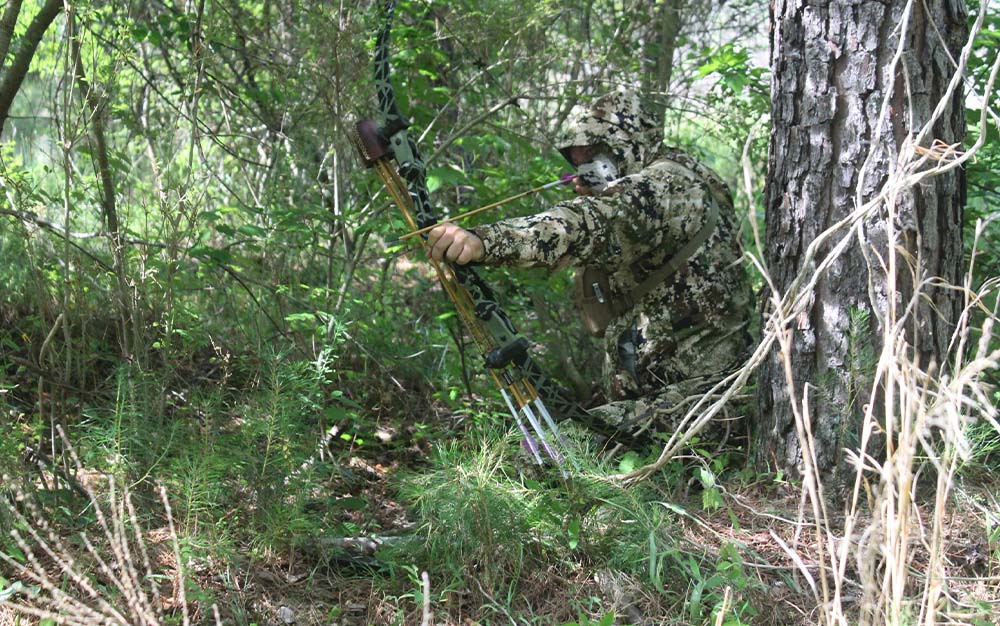
However, if I knew that my hunting day was going to be constantly wet, I could wear them with only a base layer underneath without sacrificing any of the features of my regular hunting pants. I’m thinking Alaska Moose or Pacific NorthWest Roosevelt Elk. It rains torrentially in both places. My experience usually goes: If the season is 10 days it will rain every day of my hunt. But the Thunderhead rain gear is rugged enough for anyone to wear for 10 days as their primary clothing, and you can be confident that it’ll keep you dry and silent. —Chad Bryson
Read Next: Best Hunting Rain Gear
What to Consider Before Buying a Rain Jacket
DWR Finish vs. Waterproof Membrane
The best rain jackets will typically have both a waterproof membrane and a DWR finish. Waterproof membrane, from the likes of Gore-Tex, Pertex, or Toray, are typically sandwiched in between the outer shell material of a rain jacket and the inner lining. Some are fully waterproof, preventing all moisture transfer between the outer shell material and the inner lining, while others are breathable, allowing only a one-way transfer of air and moisture. DWR (durable water repellent) finishes are applied directly to the outer shell of a rain jacket, preventing water from penetrating the outer shell fabric. Because they are on the outermost layer, DWR finishes typically degrade over time, and must be reapplied to ensure efficacy.
Price
The best waterproof membranes from the likes of Gore-Tex can run up the price of rain jackets into the hundreds of dollars. Consider what level of waterproofness you actually need before committing to a price point.
Weight
Ideally, your rain jacket will spend most of its time in your pack. An unnecessarily heavy rain jacket can weigh down your pack, which will adversely affect backpackers and backpack hunters.
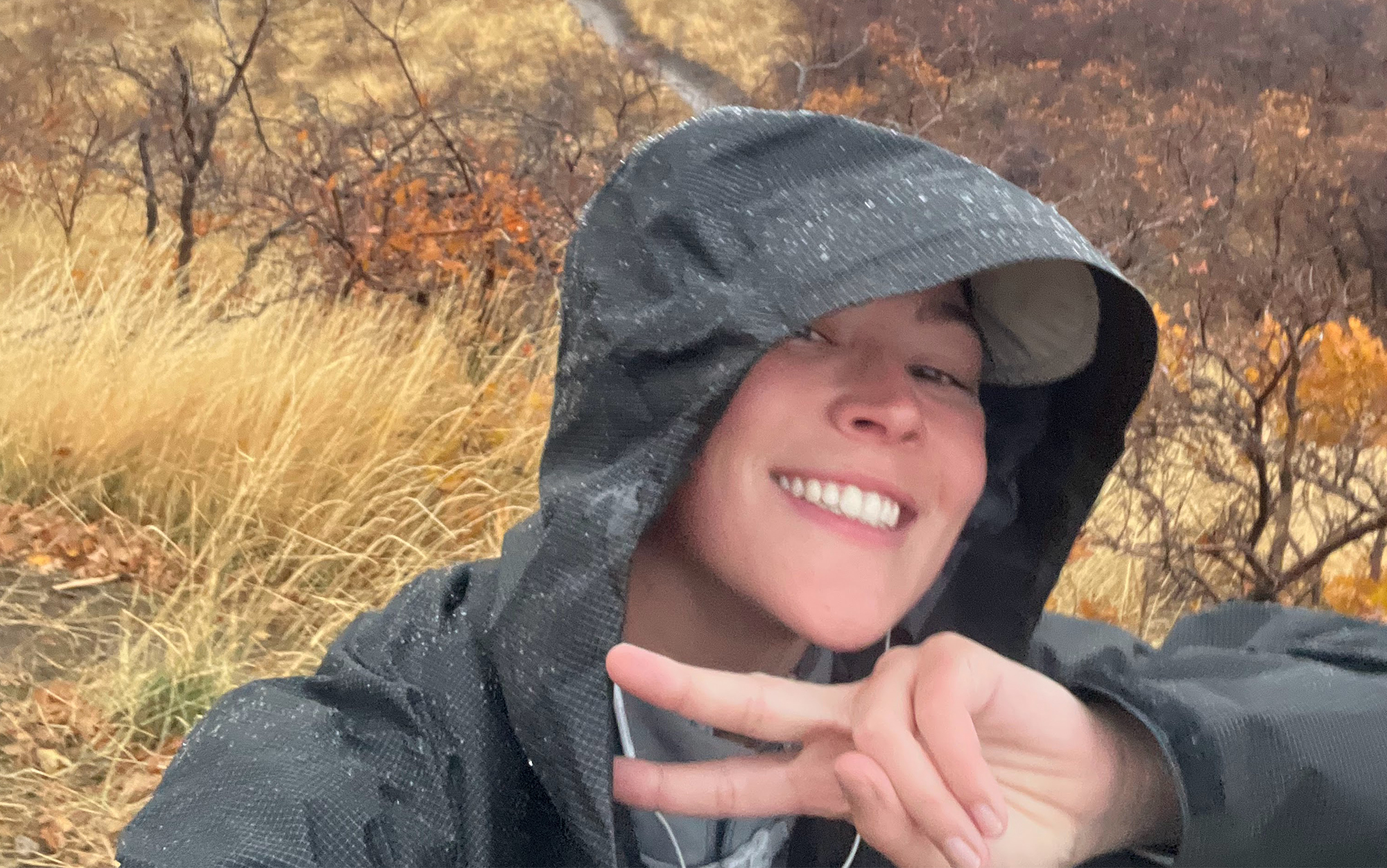
Durability
The lightest weight rain jackets are frequently less durable than heavier weight rain jackets. If you plan to spend a lot of time going through the brush and muck then it’s worth spending a bit more in terms of cash and weight to get a more durable option.
Pit Vents and Breathability
As it turns out, rain isn’t the only thing that can soak your layers. There’s also sweat. Many people who enjoy outdoor recreation sweat so much that they can completely soak through their base layers. That’s a major problem if the weather turns and the temperature drops. To avoid this problem, some waterproof materials attempt to balance “breathability” with waterproofness, allowing some of the excess heat and moisture that your body is generating to escape to the outside again. Another way that rain jackets help to expel heat and moisture is through strategically placed pit vents. However, both of these options can allow rain to eventually creep back inside your rain jacket. Consider your own needs before making a final decision.
FAQs
Rain jackets are often balancing weight, range of motion, and price with actual waterproofness. The reality is that most people, most of the time, do not need a completely waterproof jacket. In fact, if you are prone to sweating excessively, a fully waterproof jacket may trap too much heat and cause your base layers to soak through with sweat regardless. However, if you need a truly waterproof jacket and these other factors are not true considerations, we would encourage you to check out.
A good rain jacket has a high-quality waterproof membrane. The most well-known of these is Gore-Tex, but there are other brands as well, including Toray, Pertex, and eVent.
Rain jackets, also known as shell layers, should be loose when worn with nothing more than a T-shirt. This allows you to layer up underneath, with either the best base layers or the best packable down jackets, or both.
Read Next: The Best Hiking Jackets
Why Trust Outdoor Life?
Since 1898, OL has been a leading authority in testing and reviewing hunting gear, fishing tackle, guns and shooting equipment, and much more. We have more than a century-long history of evaluating products, and we’re now bringing that expertise to online reviews. Our editors are experienced outdoorsmen and women, and most importantly, we’re trained journalists. We prioritize field testing and objective data when reviewing products. We conduct interviews with gear manufacturers and engineers as well as outdoor experts so that our readers have an understanding of how and why a product works—or doesn’t.
Advertising does not influence our gear reviews and it never will. While we always focus our coverage on standout products—because we want our readers to be aware of the latest and greatest gear—we also cover the flaws and quirks of any given product.
Final Thoughts on the Best Rain Jackets
Staying dry is essential to making the most out of the outdoors. If you’re ready to upgrade your rain jacket, there is an option out there, whatever your budget, climate, and activity of choice.
- Best for Hunting: Sitka Thunderhead
- Best for Extreme Conditions: Grundens Neptune Jacket
- Best for Backpacking: Arctery’x Beta LT
- Best for Fly Fishing: Simms Challenger
- Best Lightweight: Sitka Dew Point
- Best Ultralight: Montbell Versalite
- Best Budget: Frogg Toggs Ultralight2 Suit
